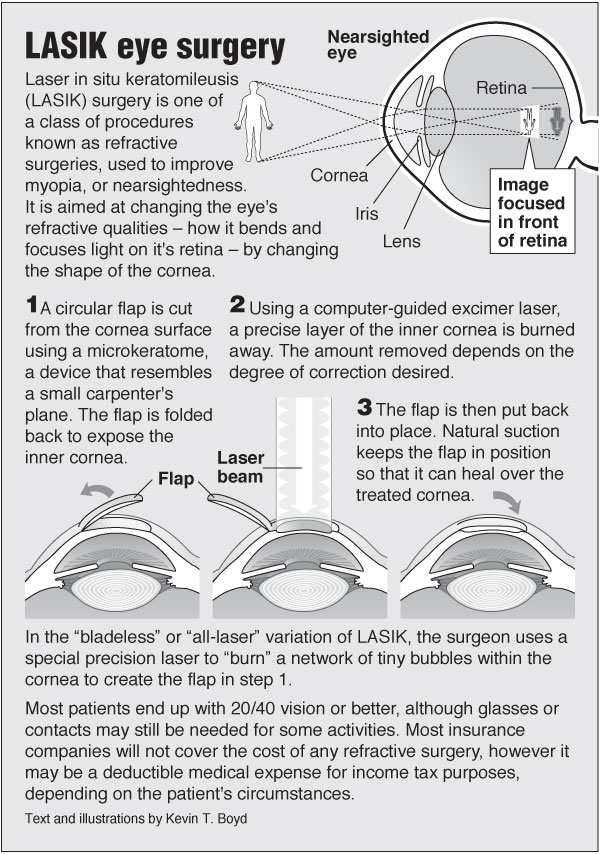What Are The Differences And Similarities In Between SMILE Eye Surgical Treatment And LASIK And PRK?
What Are The Differences And Similarities In Between SMILE Eye Surgical Treatment And LASIK And PRK?
Blog Article
https://whathappensduringlasikeye05049.answerblogs.com/26717072/transitioning-from-glasses-and-get-in-touch-with-lenses-to-smile-is-a-popular-choice-for-lots-of -Ryberg Copeland
If you have actually been taking into consideration SMILE eye surgery, you may ask yourself exactly how it stacks up against LASIK and PRK. Each treatment has its own collection of benefits and considerations. From quicker recovery times to prospective risks, there are crucial distinctions you ought to know before choosing. Comprehending these distinctions will certainly aid you make an informed option that lines up with your details needs and expectations. Interested to understand more regarding just how these treatments contrast carefully? Keep exploring to acquire an extensive understanding of SMILE, LASIK, and PRK.
SMILE Eye Surgical Procedure Introduction
If you're considering SMILE eye surgery, you'll discover it to be a minimally intrusive procedure with a quick recuperation time. During SMILE (Little Incision Lenticule Extraction), a laser is used to develop a tiny, accurate incision in the cornea to get rid of a tiny item of tissue, improving it to correct your vision. This differs from LASIK, where a flap is developed, and PRK, where the outer layer of the cornea is completely eliminated.
Among the essential benefits of SMILE is its minimally intrusive nature, leading to a faster healing process and less discomfort post-surgery. The recovery time for SMILE is fairly quick, with many patients experiencing enhanced vision within a day or two. This makes it a prominent option for those seeking a practical and reliable vision improvement treatment. Additionally, SMILE has been shown to have a lower threat of dry eye syndrome contrasted to LASIK, making it a favorable alternative for people concerned about this prospective side effect.
Differences In Between SMILE, LASIK, and PRK
When comparing SMILE, LASIK, and PRK eye surgeries, it is very important to comprehend the distinctive methods made use of in each procedure for vision modification.
SMILE (Little Incision Lenticule Removal) is a minimally intrusive treatment that entails developing a small cut to extract a lenticule from the cornea, improving it to remedy vision.
LASIK (Laser-Assisted In Situ Keratomileusis) involves creating a thin flap on the cornea, utilizing a laser to improve the underlying cells, and then repositioning the flap.
PRK (Photorefractive Keratectomy) removes the external layer of the cornea prior to reshaping the cells with a laser.
The primary distinction lies in the means the cornea is accessed and treated. SMILE is flapless, making it an excellent alternative for people with slim corneas or those involved in call sporting activities. LASIK provides quick visual recuperation because of the flap production, yet it may pose a greater danger of flap-related problems. PRK, although having a much longer healing duration, stays clear of flap-related problems entirely.
Understanding these variances is critical in choosing the most ideal procedure for your vision modification demands.
Benefits And Drawbacks Comparison
To evaluate the advantages and disadvantages of SMILE, LASIK, and PRK eye surgical treatments, it's essential to take into consideration the details advantages and possible restrictions of each procedure. SMILE surgery provides the benefit of a minimally invasive treatment, with a smaller sized laceration and potentially quicker recuperation time contrasted to LASIK and PRK. It likewise decreases the threat of completely dry eye post-surgery, a typical negative effects of LASIK. However, SMILE might have restrictions in dealing with greater levels of nearsightedness or astigmatism contrasted to LASIK.
LASIK surgery offers fast aesthetic healing and very little pain throughout the procedure. It's very efficient in dealing with a vast array of refractive mistakes, including myopia, hyperopia, and astigmatism. Yet, LASIK carries a danger of flap issues, which can influence the corneal framework.
in cataract surgery what does the surgeon remove , while not as popular as LASIK, avoids developing a corneal flap, minimizing the risk of flap-related problems. It appropriates for clients with slim corneas or irregular corneal surfaces. Nonetheless, PRK has a longer recovery time and may involve extra discomfort during the healing process.
Final thought
So, when it pertains to picking between SMILE, LASIK, and PRK, think of it like picking the ideal set of footwear. SMILE is like a streamlined, comfortable pair of sneakers - quick and easy.
LASIK is extra like stylish high heels - showy and fast, but with some potential risks.
PRK resembles durable treking boots - trustworthy and resilient, but requiring a bit even more time and effort.
Eventually, can you get cataracts at 40 depends on your individual requirements and preferences.
